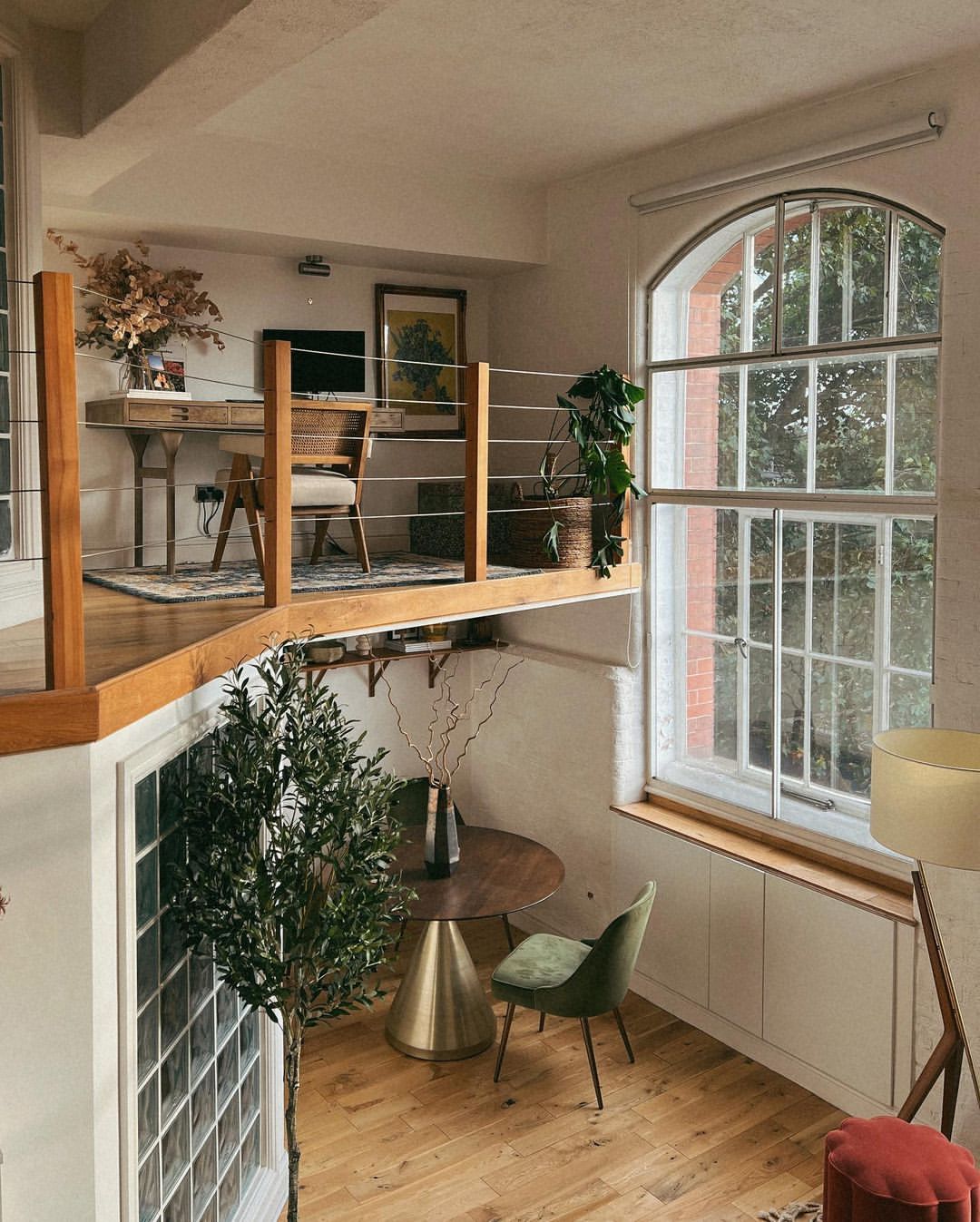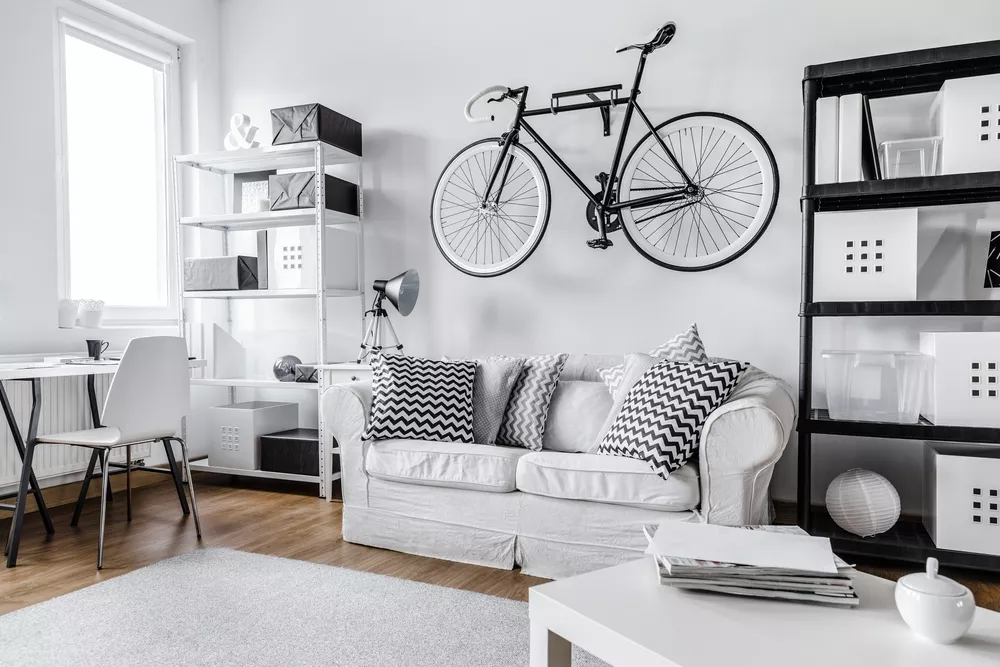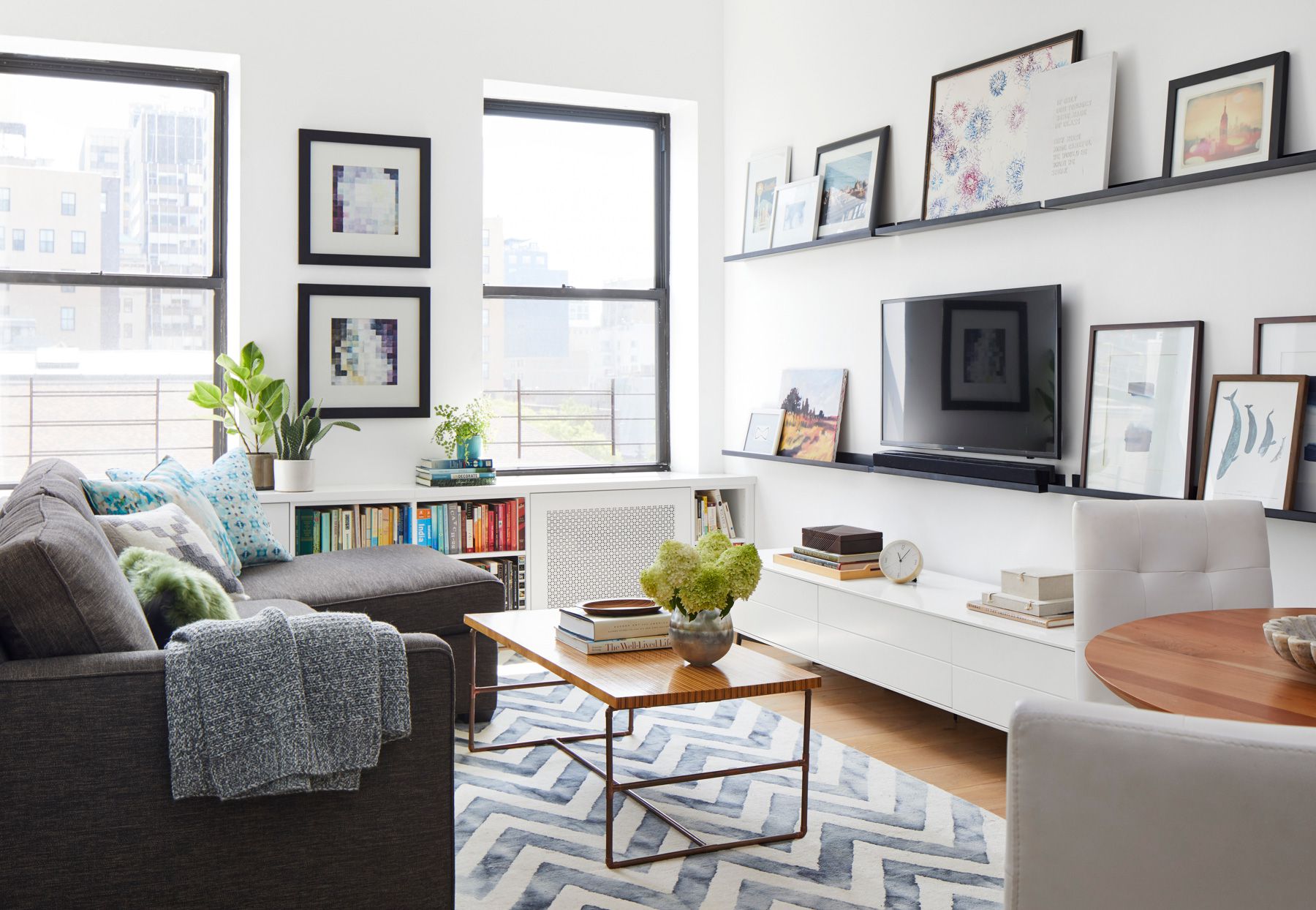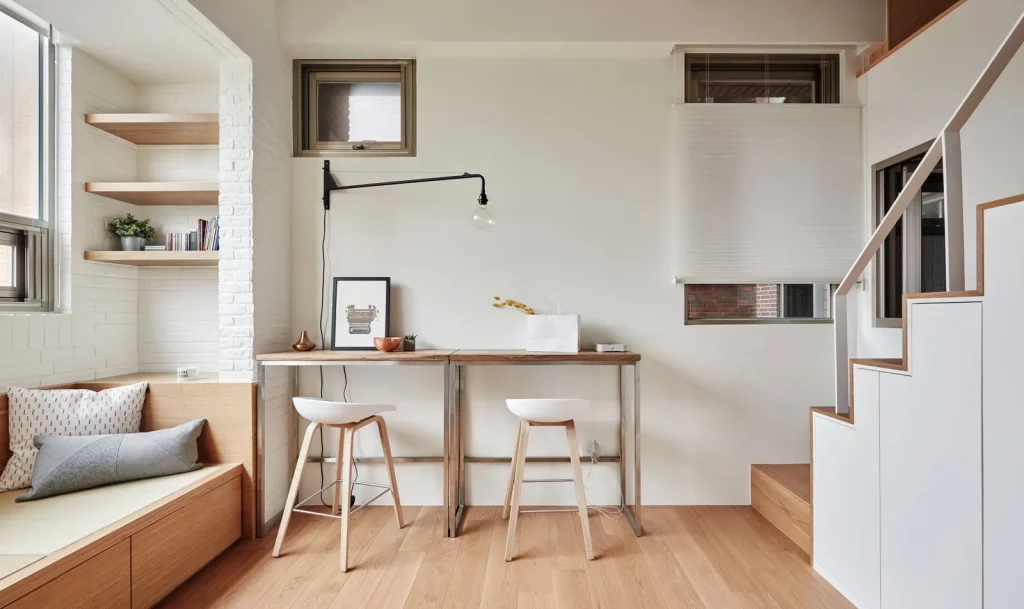Introduction to Small Space Solutions
In today’s urban landscape, making the most out of a limited living area is a critical skill. As city life continues to attract more individuals seeking its vibrant energy and opportunities, the result is often smaller living spaces, whether apartments, studios, or shared homes. This trend highlights the necessity of developing innovative small space solutions that not only maximize functionality but also maintain an aesthetically pleasing environment. By understanding and implementing these strategies, you can transform even the most compact dwelling into a stylish and comfortable retreat.

Space optimization goes beyond simply selecting the right furniture or layout; it’s about embracing a mindset that values smart use of every square inch. For those living in metropolitan areas or simply seeking to downsize, the benefits are clear: reduced clutter, increased efficiency, and a personalized living area that caters specifically to your needs. There’s a growing body of research acknowledging the psychological and emotional benefits of organized living spaces, making this endeavor as much about enhancing well-being as it is about physical accommodation.
For those unfamiliar with the potential of compact living, envision a home where every item serves more than one purpose, your flooring space is strategically open yet intimate, and your storage solutions are both practical and visually appealing. By recognizing the potential challenges and crafting practical solutions, such as modular furniture or creative storage ideas, any space can be beautifully optimized without sacrificing style.
Furthermore, taking advantage of the wealth of resources available online, such as expert interior design advice, can ease the transition to a more efficient lifestyle. One such resource, the Urban Design Group, offers valuable insights into creating dynamic and adaptable living environments that cater to small spaces.
By focusing on purposeful design and strategic planning, small space solutions can usher in a sense of tranquility and coherence to your living environment, proving that less can indeed be more. The following sections will delve deeper into understanding the common challenges of small living spaces and emphasize the importance of maximizing space effectively.
Understanding the Challenges of Small Living Spaces
Common Issues Faced in Small Spaces
In today’s urbanized world, small living spaces are becoming increasingly prevalent. As city populations swell, maximizing every square inch becomes crucial. Some common issues include limited storage options, lack of privacy, and the challenge of creating distinct living areas within one compact space. Small apartments often suffer from poor layout design, leaving residents unable to utilize the full potential of their homes.

Clutter can quickly overrun these compact areas, leading to a chaotic environment that stifles comfort and functionality. Additionally, many find it difficult to apply their personal style due to the restrictive nature of smaller spaces. The tendency to accumulate belongings exacerbates these challenges, making effective organization a critical skill for small space dwellers.
To help tackle these common hurdles, consider employing strategic storage solutions and innovative design features that efficiently use available space. Check out resources on small space living for further insights and inspiration.
Importance of Maximizing Space
The importance of maximizing space in small living areas cannot be overstated. Utilizing strategic solutions not only enhances functionality but also contributes significantly to a sense of well-being and satisfaction in your home. When space is at a premium, every piece of furniture, every corner, every wall becomes crucial in maintaining an effective and stylish living environment.

Maximizing space involves selecting furniture that serves multiple purposes and is adaptable to various functions. Techniques such as utilizing vertical storage and embracing minimalistic design can create the illusion of a more expansive area. A well-thought layout and smart use of light and color can transform small spaces into inviting environments.
By understanding how to effectively maximize space, individuals can transform their compact living areas into efficient and aesthetically pleasing homes tailored specifically to their needs. Unlock the potential of your home by exploring innovative space-saving solutions that blend practicality with style.
Smart Furniture Choices for Small Spaces
Multi-Functional Furniture
When living in a small space, every piece of furniture must serve a purpose, or better yet, multiple purposes. Multi-functional furniture is the quintessential solution for maximizing functionality without sacrificing style. Consider investing in a sofa bed that can provide a comfortable seating area by day and transform into a guest bed by night. Similarly, a coffee table with storage compartments can help keep the clutter at bay while offering a stylish centerpiece for your living room.

Not only do these smart furniture choices save space, but they also add value and versatility to your home. For instance, a dining table that doubles as a work desk can seamlessly transition between mealtime and office hours, which is essential in small apartments where designated areas are a luxury. Expert designers often recommend selecting furniture that reflects your personality and matches your aesthetic preferences, ensuring that functionality doesn’t compromise style.
To delve deeper into the versatility of multi-functional furniture, explore insights from Architectural Digest.
Foldable and Expandable Designs
Another brilliant solution for maximizing space in small living areas is the use of foldable and expandable furniture. These ingenious designs are crafted to adapt to your needs, allowing you to expand or contract as your situation demands. A perfect example is a folding dining table that can stretch to accommodate several guests and then seamlessly retract to a compact size when not in use. Such adaptability is invaluable for those who entertain infrequently but still want to host gatherings.
In your bedroom, consider foldable wall-mounted desks that provide a sturdy workspace when needed and disappear when not in use, freeing up precious floor space. Additionally, wall beds, or Murphy beds, can effortlessly transform a living room into a bedroom, offering a space-saving solution without compromising comfort or style.
By incorporating foldable and expandable furniture, you harness the potential of your home, creating a more dynamic and practical environment. It’s vital to choose high-quality pieces that promise durability to ensure your investment serves you well in the long term.
Incorporating these innovative furniture designs can significantly enhance the functionality and aesthetics of your living space, making it feel more open and less confined. There is a world of options out there waiting to transform even the smallest of spaces into a stylish and welcoming retreat.
Efficient Layouts for Small Living Areas
Open Floor Plan Benefits
Adopting an open floor plan is a transformative solution for small living spaces, offering an array of benefits that enhance both functionality and style. By eliminating unnecessary walls and embracing an open design, you create a sense of expansiveness that makes any small area feel larger and more welcoming. This approach not only maximizes the available square footage but also improves natural light flow, which is crucial in smaller environments to avoid a cramped, dark appearance.

Furthermore, an open floor layout facilitates a more flexible use of space, allowing for seamless transitions between living, dining, and kitchen areas. This can result in increased social interaction during gatherings, as family and guests share a common, uninterrupted environment. For a more detailed look at the advantages of open floor plans in small spaces, this article provides additional insights.
Zoning Your Space
While open floor plans offer numerous advantages, zoning your space ensures that you maintain distinct areas for different activities, a necessity in smaller homes. Zoning involves the strategic placement of furniture, rugs, and lighting to create specific areas dedicated to various functions like lounging, dining, and working. For instance, using a bookshelf or a stylish room divider can demarcate a home office from the rest of the living area, maintaining a sense of order and purpose.
Consider employing visual and physical markers, such as different themed decor or paint colors, to further establish zones without sacrificing the openness of your space. Additionally, incorporating various lighting fixtures, such as pendant lights above a dining table or floor lamps in a reading nook, can help define zones while simultaneously adding ambiance and style.
By employing these strategies, you can achieve a harmonious balance between openness and purposeful space division, ensuring that each area in your small living space meets its intended function while still aligning with your overall aesthetic vision.
Creative Storage Solutions
When living in a compact environment, efficient storage solutions become a necessity rather than a luxury. Maximizing limited space while maintaining style calls for a combination of creativity and strategic organization. Let’s explore some innovative storage ideas that will help you achieve both functionality and elegance.
Vertical Storage Ideas
Leveraging vertical space is one of the most effective ways to create additional storage in small interiors. This approach not only utilizes the often-overlooked upper wall areas but also adds an element of architectural interest.
- Shelving: Floating shelves and bookcases can transform blank walls into attractive focal points, offering ample room for books, plants, and decorative pieces. Consider arranging shelves in a cascading manner for a unique visual appeal.
- Tall Cabinets: Opt for cabinets that extend to the ceiling in kitchens or bathrooms. These provide more storage than traditional designs and prevent clutter from accumulating on surfaces.
- Pegboards: Popular in workspace design, pegboards are versatile and can adapt to various household needs, from organizing kitchen utensils to keeping frequently used tools within reach.
For further information on vertical storage strategies, you can refer to this resource on vertical storage solutions from This Old House.
Under-Bed Storage Options
The area underneath your bed is often underutilized, yet it offers a wealth of storage potential. By incorporating thoughtful solutions, you can free up floor space while keeping items neatly tucked away.
- Drawers and Boxes: Invest in storage boxes or rolling drawers that fit snugly under the bed. These are perfect for off-season clothing, bedding, or shoes.
- Platform Beds: Consider a platform bed frame with built-in drawers. This type of furniture not only provides additional storage but also eliminates the need for a separate dresser, further saving precious space.
- DIY Solutions: If you’re handy, creating a custom under-bed storage unit to meet specific needs can be both satisfying and functional.
Utilizing Hidden Storage
Hidden storage seamlessly integrates into your decor, providing a decluttered appearance while still allowing easy access to essentials. These clever hacks ensure that no inch of space goes to waste.
- Dual-Purpose Furniture: Furniture pieces like ottomans, benches, and coffee tables with built-in storage provide concealed compartments for myriad items. This dual functionality is particularly advantageous in living areas or studio apartments.
- Behind-the-Door Storage: Utilizing the back of doors in your home can yield surprising amounts of space. Door-mounted racks in closets, kitchens, or bathrooms keep items organized without intruding into the room’s limited square footage.
- Clever Cabinets: Look for furniture with hidden compartments or secret drawers. These offer discreet storage for valuables and add an element of intrigue to your space.
In conclusion, with a bit of imagination and resourcefulness, small spaces can be just as stylish and organized as larger ones. By adopting these creative storage solutions, you can maximize every inch of your home without sacrificing aesthetics.
Interior Design Tips for Small Spaces
Color Schemes to Create Illusion of Space
Small spaces often face the challenge of feeling cramped or cluttered. One effective way to counteract this is through the strategic use of color schemes. Light, airy colors such as whites, soft grays, and pastels can open up a room, creating the illusion of space by reflecting natural light. For instance, painting walls and ceilings in shades of white can eliminate visual boundaries, making your living area seem larger than it is. Additionally, incorporating subtle variations in hues between walls and trims can add depth, further enhancing this expansive feel.
Moreover, adding accent walls in deeper tones can provide contrast and draw the eye, creating a focal point that diverts attention from the room’s size. To maintain cohesion, complement these with matching or coordinated accessories such as throw pillows or art pieces. More insights into color psychology and its spatial effects can be found at reliable resources like HGTV.
Lighting Techniques to Enhance Ambiance
Lighting is an essential element in interior design, particularly in small spaces, where it can dramatically affect how a room is perceived. The key to utilizing lighting effectively is layering. Combining different types of lighting—ambient, task, and accent lighting—can introduce depth and dimension to confined areas.
To maximize functionality and style, consider installing recessed lighting for a clean, unobtrusive source of illumination. This type of lighting frees up space and avoids clutter that traditional fixtures can cause in low-ceilinged rooms. Incorporate floor lamps and table lamps to add layers and warmth. These serve not just as functional elements but also as stylish accents that contribute to a room’s overall design aesthetic. Additionally, using mirrors strategically can multiply light sources, amplifying the ambient glow and augmenting the room’s spatial perception.
Innovative lighting solutions, such as LED strips or dimmable lights, offer versatility and can adapt to different needs and moods, from bright and lively to soft and relaxing. Explore the importance of lighting design further on Lighting Research Center.
By thoughtfully applying these interior design tips, you can transform any small space into a functional and stylish haven.
Conclusion: Embracing Small Space Solutions
Final Thoughts on Maximizing Small Spaces
In the ever-evolving realm of interior design, small spaces present both unique challenges and exceptional opportunities for creativity. Embracing these challenges requires a strategic balance of functionality and style, proving that a smaller abode can indeed embody grandeur and comfort.
When it comes to maximizing small spaces, the importance of smart furniture choices, efficient layouts, and creative storage solutions cannot be overstated. By integrating multi-functional furniture and ingenious foldable designs, you can successfully utilize every nook and cranny. Furthermore, imaginative storage solutions such as vertical shelving and hidden compartments ensure that every square inch serves a purpose, mitigating clutter and enhancing the flow of the space.
The transformative power of interior design tips should not be underestimated—choosing the right color schemes can create the illusion of expansiveness, while the strategic use of lighting can elevate the ambiance to evoke warmth and openness. In essence, small spaces give us the opportunity to innovate and redefine what it means to live comfortably.
As you embark on the journey of maximizing your small space, remember to prioritize the elements that align with your personal style and daily needs. By doing so, you create a home that is not just a reflection of your personality but a testament to the art of living large in small spaces. For further inspiration and practical insights on maximizing space, consider exploring additional resources like Apartment Therapy.
With thoughtful planning and inspired design, your compact quarters can become a livable, lovable space that defies its size—truly affirming that good things come in small packages.
